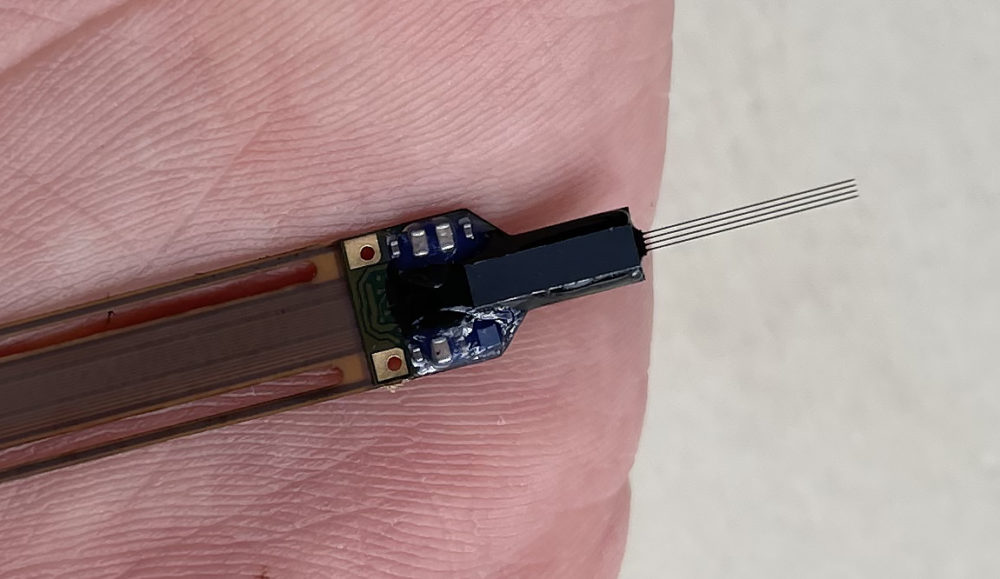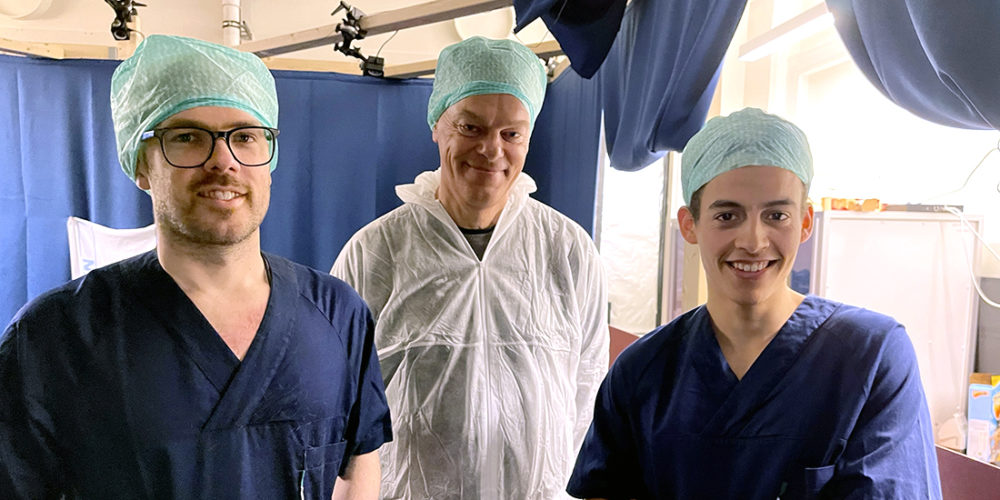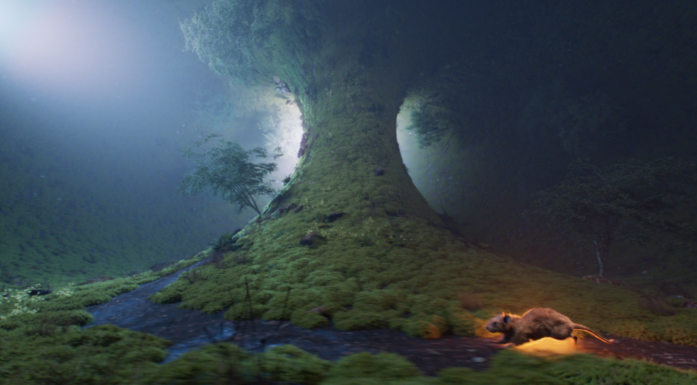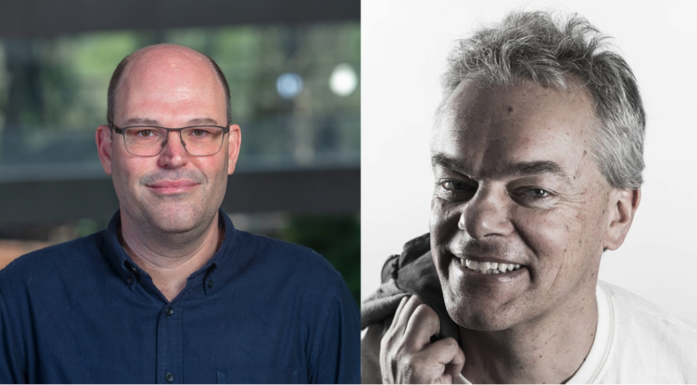Tomorrow’s research technology co-developed at Kavli Institute for Systems Neuroscience
Nobel laureate and Kavli Institute for Systems Neuroscience founding director and professor Edvard Moser says a new technology “opens doors to experiments we could only dream about 5 years ago.” The technology in question is called Neuropixels 2.0, a new favourite in the neuroscientists’ toolbox.
Neuropixels 2.0 is a tiny brain probe with several rows of even tinier microphones.
These teeny weeny microphones can listen in on conversations between thousands of brain cells across a brain area. What they actually record, is the very neural conversations from which our intellectual abilities like learning and memory arise.

The next generation brain probe which allows recording from the same neurons in a freely behaving animal for weeks and months. Photo: Rita Elmkvist-Nilsen/Kavli Institute for Systems Neuroscience
Neuropixels 2.0 can listen to the same neurons across timescales from milliseconds up to months! At only 1/3 the size of its predecessor, it is tiny enough to be carried on the head of a freely moving mouse.
Norwegian researchers Richard Gardner, Edvard Moser and Abraham Zelalem Vollan from the Kavli Institute for Systems Neuroscience in Trondheim took part in the international joint project.
“The development of this neuroscience tool shows the value of collaborating across borders and disciplines,” says Moser.

Richard Gardner, Edvard Moser and Abraham Zelalem Vollan from the Kavli Institute for Systems Neuroscience in Trondheim have been involved in the international effort to develop the new problem. Photo: Rita Elmkvist-Nilsen/Kavli Institute for Systems Neuroscience
An article describing the new tool has just been published in Science magazine.
Source: Richard Gardner, Edvard Moser and Abraham Zelalem Vollan et al. Neuropixels 2.0: A miniaturized high-density probe for stable, long-term brain recordings. Science




